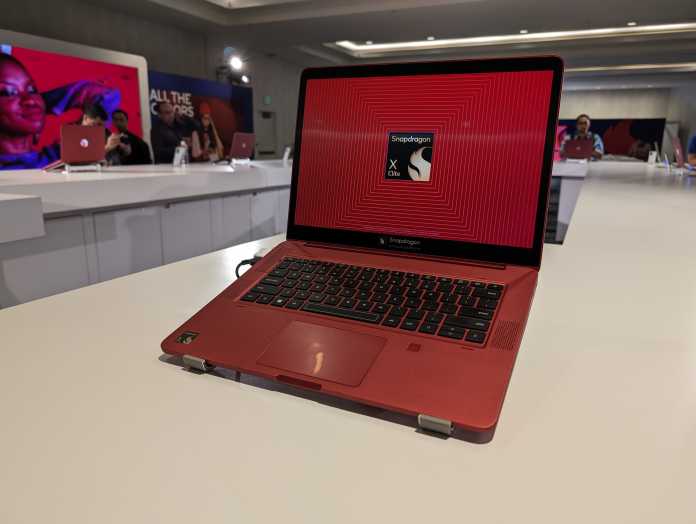Last week, Qualcomm introduced its new generation of processors, for smartphones and tablets as well as for Windows notebooks and even headphones and speakers. In addition to the usual increases in performance – higher, faster, further never goes out of style – artificial intelligence has clearly emerged as a unifying element and it is moving. Instead of in the cloud, calculations are increasingly taking place locally on the devices, without any internet connection.
Advertisement
Steffen Herget writes for c’t and heise online about smartphones, tablets and gadgets of all kinds. When he’s not in front of the screen, he sits on his bike, walks or reads a book – completely analogue.
The fact that mobile processors are increasingly able to calculate complicated AI models without the help of mainframe computers has the potential to change the way the devices are used. Image design with StableDiffusion or video editing with all sorts of helpers is just one aspect; the digital and very personal AI assistant, with which you interact via voice, gestures or text, should become more important. If your own voice assistant doesn’t have to repeatedly obtain information and access databases via the Internet, it can ideally become faster and more personal and adapt more and more to its owner over time. If all the data for these functions actually remains on the device, as Qualcomm promises, the protection of private data will ideally also increase – what is not sent over the network and stored in the cloud is more difficult to access.
Moving helper wanted
However, a locally stored personal assistant also creates potential problems. How does it work when interacting with multiple devices? Do I have to train my AI on the smartphone and also the one on the laptop, because both don’t leave the respective device? And what happens if I want to change my smartphone? Then I would need a digital moving helper so that I don’t have to start all over again. Tangible answers to these questions were not forthcoming from Qualcomm at the Snapdragon Summit.
The chip manufacturer is also dependent on the help of its hardware partners in this and other points, because they ultimately have to implement the functions provided by the processor. The more centralized these become, the more Lenovo, Samsung and Co. chain themselves to Qualcomm and its chips, because if they switched to a different architecture, the adapted AI would ultimately be gone and their own devices would be deprived of interesting functions. In the end, just another walled garden like the Apple universe could emerge, albeit at chip level and across manufacturer boundaries.
Of course, it will take a while before the new chips reach enough customers. The Snapdragon X Elite, for example, which is used in notebooks, will not celebrate its premiere in stores until mid-2024. So there’s plenty of time for others to come up with their own solutions to Qualcomm’s ideas.
Last chance for Windows on Arm
The question also remains whether Windows on Arm will finally get water under its keel with the X Elite and the new Oryon CPU and gain momentum. Qualcomm also presented the last notebook processor, the Snapdragon 8cx Gen 3, with high hopes two years ago and was bitterly disappointed in the end. Only Lenovo, Samsung and Microsoft have built it into a handful of models, Microsoft even as a slightly adapted variant without the Snapdragon title under the name SQ3.

It remains to be seen whether notebooks with Qualcomm processors will hit the market.
(Image: c’t Magazine/sht)
Qualcomm was able to present a much longer list of partners at the Snapdragon Summit this year, including Acer, Asus, Dell, HP, Honor and Xiaomi. But paper is patient and product ranges are large. It is still far from clear how prominently the Snapdragon X Elite will ultimately appear in stores. On paper, the processor has a lot to offer, but as we all know, that alone isn’t enough. If the Snapdragon X Elite doesn’t work out, it would be a massive setback for Qualcomm and the device category.
Competition also in smartphones
Qualcomm even has a lot of competition when it comes to smartphones. Apple and Google prefer to build their SoCs themselves, and Samsung will most likely switch back to its own Exynos processor with the Galaxy S24 in Europe. If you believe current rumors, only the top model S24 Ultra will carry the Snapdragon 8 Gen 3 worldwide. After all: Honor and Xiaomi have already announced their own high-end smartphones with the chip at the presentation of the new eight. Even that isn’t as obvious as it sounds, because the Xiaomi 13T and 13T Pro, which were introduced in Germany a few weeks ago, contain the Dimensity 9200 from Qualcomm’s competitor Mediatek, which even has a slightly larger market share globally. Analysts at Counterpoint see Mediatek at 30 percent and Qualcomm at 29 percent in terms of the number of chips delivered.
As exciting as Qualcomm’s vision with the new Snapdragon generation is, it is far from certain whether the plan will ultimately work.
(sht)

